Roast Lamb: the quintessential centerpiece of a celebratory feast, a dish that evokes warmth, tradition, and the comforting aroma of herbs and perfectly rendered fat. Have you ever dreamt of presenting a show-stopping main course that leaves your guests utterly speechless? Look no further! This recipe will guide you through creating a succulent, flavorful roast lamb that will become a cherished family favorite.
Lamb has a rich history, deeply intertwined with various cultures and religious traditions. From the Passover Seder to Easter celebrations, lamb symbolizes sacrifice, renewal, and abundance. For centuries, it has graced tables around the world, prepared with regional variations that reflect local ingredients and culinary techniques. The simple act of roasting lamb transforms a humble cut of meat into something truly special.
But why do people adore roast lamb so much? It’s a symphony of flavors and textures. The crispy, golden-brown exterior gives way to tender, juicy meat that practically melts in your mouth. The subtle gaminess of the lamb, perfectly balanced by aromatic herbs and spices, creates an unforgettable culinary experience. Plus, while it might seem intimidating, roasting lamb is surprisingly straightforward. With a little preparation and attention to detail, you can achieve restaurant-quality results in your own kitchen. Get ready to impress with this timeless classic!
Ingredients:
- 2.5-3 kg leg of lamb, bone-in
- 2 tbsp olive oil
- 4 cloves garlic, minced
- 2 tbsp fresh rosemary, chopped
- 1 tbsp fresh thyme, chopped
- 1 lemon, zest and juice
- 1 tbsp Dijon mustard
- Salt and freshly ground black pepper to taste
- 1 large onion, quartered
- 2 carrots, roughly chopped
- 2 celery stalks, roughly chopped
- 500ml lamb or chicken stock
- 250ml dry red wine (optional)
- 2 tbsp plain flour (optional, for gravy)
- Fresh parsley, chopped (for garnish)
Preparing the Lamb:
- Preheat your oven to 220°C (200°C fan/Gas Mark 7). This initial high heat helps to brown the lamb beautifully.
- While the oven is heating, prepare the lamb. Pat the leg of lamb dry with paper towels. This is crucial for achieving a good sear. Excess moisture will steam the lamb instead of browning it.
- In a small bowl, combine the olive oil, minced garlic, chopped rosemary, chopped thyme, lemon zest, lemon juice, and Dijon mustard. This mixture will be our flavorful marinade.
- Season the lamb generously with salt and freshly ground black pepper. Don’t be shy with the seasoning! It’s essential for bringing out the lamb’s natural flavors.
- Rub the herb mixture all over the lamb, ensuring it’s evenly coated. Really massage it in so the flavors penetrate the meat.
- Place the quartered onion, chopped carrots, and chopped celery stalks in the bottom of a large roasting pan. These vegetables will create a flavorful base for the lamb and add depth to the gravy later.
- Place the lamb on top of the vegetables in the roasting pan. Make sure the lamb isn’t touching the sides of the pan too much to allow for even browning.
Roasting the Lamb:
- Place the roasting pan in the preheated oven and roast for 20 minutes. This initial blast of high heat will create a lovely crust on the lamb.
- After 20 minutes, reduce the oven temperature to 160°C (140°C fan/Gas Mark 3). This lower temperature will allow the lamb to cook slowly and evenly, resulting in a tender and juicy roast.
- Pour the lamb or chicken stock into the roasting pan, around the lamb and vegetables. If using, add the red wine as well. The liquid will help to keep the lamb moist and create a delicious gravy.
- Cover the roasting pan tightly with foil. This is important to prevent the lamb from drying out during the long cooking process.
- Roast for approximately 2-2.5 hours, or until the lamb is cooked to your desired doneness. The cooking time will depend on the size of the lamb and your preferred level of doneness.
-
To check the doneness of the lamb, use a meat thermometer. Insert the thermometer into the thickest part of the lamb, avoiding the bone.
- For rare: 55-60°C
- For medium-rare: 60-65°C
- For medium: 65-70°C
- For well-done: 70-75°C
- Remove the lamb from the oven and carefully remove the foil.
- Increase the oven temperature back to 220°C (200°C fan/Gas Mark 7).
- Return the lamb to the oven, uncovered, for another 15-20 minutes, or until the skin is golden brown and crispy. This final blast of heat will crisp up the skin beautifully. Keep a close eye on it to prevent burning.
- Remove the lamb from the oven and transfer it to a carving board.
- Let the lamb rest for at least 15-20 minutes before carving. This is crucial for allowing the juices to redistribute throughout the meat, resulting in a more tender and flavorful roast. Cover loosely with foil while it rests.
Making the Gravy (Optional):
- While the lamb is resting, prepare the gravy. Strain the juices from the roasting pan into a saucepan, discarding the vegetables (or reserving them for another use).
- Skim off any excess fat from the surface of the juices. A fat separator can be helpful for this.
- Place the saucepan over medium heat and bring the juices to a simmer.
- In a small bowl, whisk together the plain flour with a little cold water to form a smooth paste (a slurry). This will prevent lumps from forming in the gravy.
- Gradually whisk the flour paste into the simmering juices, stirring constantly to prevent lumps.
- Continue to simmer the gravy, stirring occasionally, until it has thickened to your desired consistency. This usually takes about 5-10 minutes.
- Season the gravy to taste with salt and freshly ground black pepper. You can also add a splash of red wine or a squeeze of lemon juice for extra flavor.
- Strain the gravy through a fine-mesh sieve for an extra smooth finish (optional).
Carving and Serving:
- Carve the lamb against the grain into thin slices.
- Arrange the lamb slices on a serving platter.
- Pour the gravy over the lamb.
- Garnish with fresh chopped parsley.
- Serve immediately with your favorite side dishes, such as roasted potatoes, mashed potatoes, green beans, or Yorkshire puddings.
Tips for the Perfect Roast Lamb:
- Choose the right cut of lamb: A leg of lamb is a classic choice for roasting, but you can also use a shoulder of lamb. Shoulder of lamb is generally more flavorful but requires a longer cooking time.
- Bring the lamb to room temperature: Take the lamb out of the refrigerator about an hour before cooking to allow it to come to room temperature. This will help it cook more evenly.
- Don’t overcook the lamb: Overcooked lamb can be dry and tough. Use a meat thermometer to ensure it’s cooked to your desired doneness.
- Rest the lamb: Resting the lamb is crucial for allowing the juices to redistribute throughout the meat, resulting in a more tender and flavorful roast.
- Make the gravy ahead of time: You can make the gravy ahead of time and reheat it before serving. This will save you time on the day of your roast.
- Add other vegetables to the roasting pan: Feel free to add other vegetables to the roasting pan, such as parsnips, sweet potatoes, or Brussels sprouts.
- Use fresh herbs: Fresh herbs add a wonderful flavor to the lamb. If you don’t have fresh herbs, you can use dried herbs, but use about half the amount.
- Marinate the lamb overnight: For even more flavor, marinate the lamb overnight in the herb mixture.
- Deglaze the roasting pan: After removing the lamb from the roasting pan, you can deglaze the pan with a little red wine or stock to create an even more flavorful gravy. Simply scrape up any browned bits from the bottom of the pan and add them to the gravy.
- Serve with mint sauce: Mint sauce is a classic accompaniment to roast lamb. You can buy it ready-made or make your own.
Variations:
- Garlic and Herb Crusted Lamb: Before roasting, press a mixture of minced garlic, chopped herbs, and breadcrumbs onto the lamb for a crispy and flavorful crust.
- Lemon and Rosemary Lamb: Use lemon slices and rosemary sprigs to infuse the lamb with a bright and aromatic flavor.
- Spiced Lamb: Add a blend of spices, such as cumin, coriander, and paprika, to the herb mixture for a warm and exotic flavor.
- Slow-Roasted Lamb Shoulder: For a fall-off-the-bone tender lamb, slow-roast a shoulder of
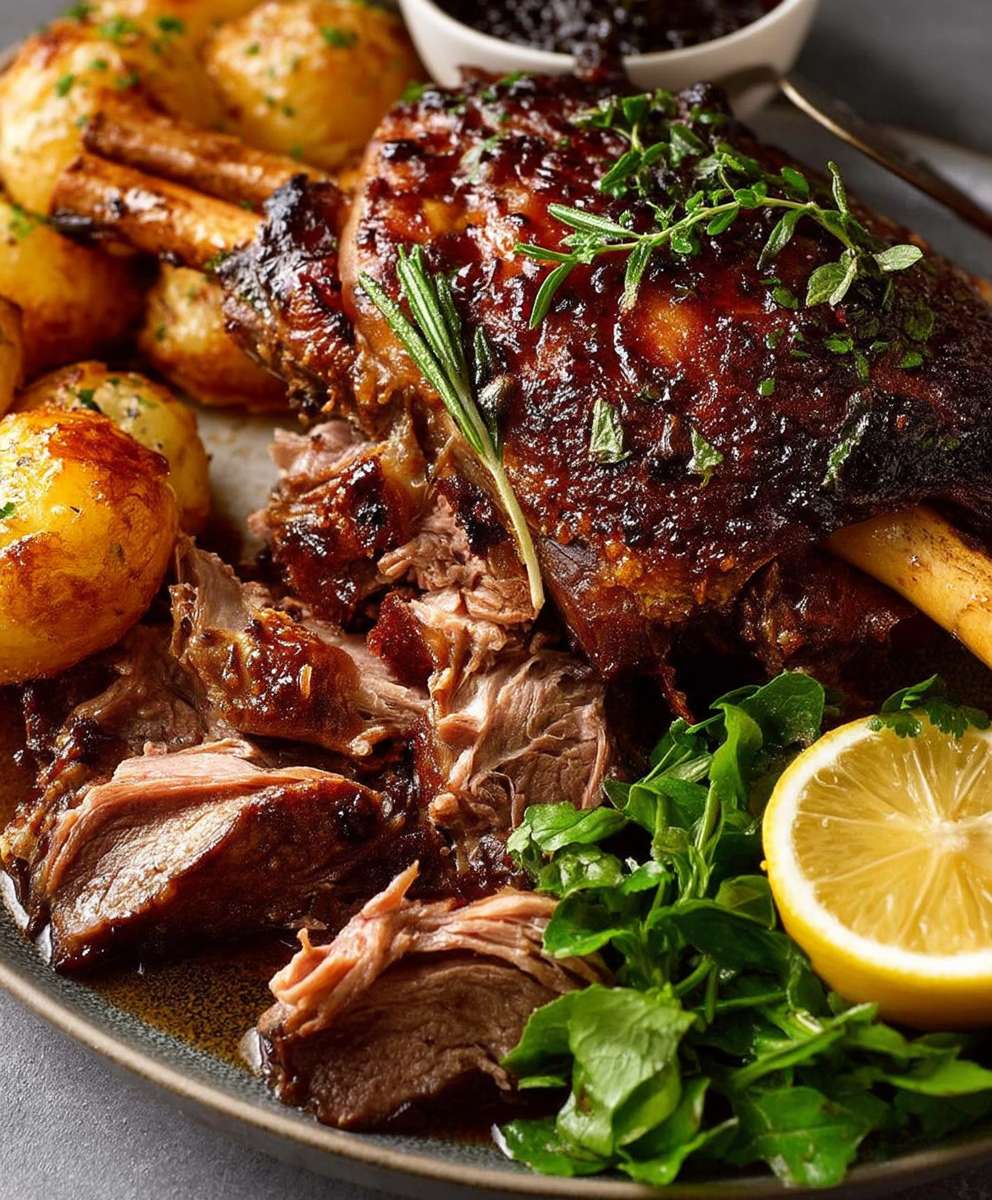
Conclusion:
And there you have it! This Roast Lamb recipe isn’t just another Sunday dinner; it’s a culinary experience waiting to happen. From the tantalizing aroma that fills your kitchen to the melt-in-your-mouth tenderness of the lamb itself, every step of this recipe is designed to deliver a truly unforgettable meal. I know, I know, there are a million roast lamb recipes out there, but trust me, the combination of herbs, the precise roasting time, and the resting period all contribute to a flavor profile that’s simply divine.
Why is this a must-try? Because it’s surprisingly simple to execute, even for novice cooks. The detailed instructions eliminate any guesswork, ensuring a perfectly cooked roast every single time. Plus, the flavor is just incredible. The herbs infuse the lamb with a fragrant earthiness, while the slow roasting process renders the fat, creating a crispy, golden-brown crust that’s utterly irresistible. It’s a dish that’s both comforting and elegant, perfect for a special occasion or a cozy family gathering.
But the best part? The versatility! While I’ve outlined my favorite way to prepare this Roast Lamb, feel free to get creative and experiment with different variations.
Serving Suggestions and Variations:
* Classic Roast Dinner: Serve with roasted potatoes, carrots, and parsnips for a traditional Sunday roast. Don’t forget the Yorkshire puddings and a generous helping of gravy!
* Mediterranean Twist: Add a squeeze of lemon juice and a sprinkle of oregano to the lamb before roasting for a Mediterranean-inspired flavor. Serve with a Greek salad and pita bread.
* Mint Sauce Magic: A classic pairing! Homemade mint sauce is the perfect complement to the richness of the lamb.
* Rosemary and Garlic Infusion: Increase the amount of rosemary and garlic for a more intense, aromatic flavor.
* Wine Pairing: A robust red wine, such as Cabernet Sauvignon or Merlot, pairs beautifully with roast lamb.
* Leftover Lamb Delight: Don’t let any leftovers go to waste! Use the leftover lamb to make sandwiches, shepherd’s pie, or lamb curry. Shredded lamb tacos are also a fantastic option!
* Spice it up: Add a pinch of chili flakes to the herb mixture for a subtle kick.
* Vegetable Medley: Roast the lamb on a bed of root vegetables like sweet potatoes, onions, and beets for added flavor and a complete one-pan meal.I truly believe that this recipe will become a staple in your kitchen. It’s a dish that’s sure to impress your family and friends, and it’s a wonderful way to celebrate the simple pleasures of good food and good company.
So, what are you waiting for? Gather your ingredients, preheat your oven, and get ready to experience the magic of this incredible Roast Lamb recipe. I’m confident that you’ll love it as much as I do.
And most importantly, I want to hear about your experience! Did you try the recipe? Did you make any variations? What did your family and friends think? Share your photos and stories in the comments below. I can’t wait to see your culinary creations! Happy cooking!
Roast Lamb: The Ultimate Guide to a Perfect Roast
A classic and flavorful roast leg of lamb, seasoned with garlic, rosemary, thyme, and lemon, roasted to perfection with vegetables and stock, and served with a delicious homemade gravy.
Ingredients
- 2.5-3 kg leg of lamb, bone-in
- 2 tbsp olive oil
- 4 cloves garlic, minced
- 2 tbsp fresh rosemary, chopped
- 1 tbsp fresh thyme, chopped
- 1 lemon, zest and juice
- 1 tbsp Dijon mustard
- Salt and freshly ground black pepper to taste
- 1 large onion, quartered
- 2 carrots, roughly chopped
- 2 celery stalks, roughly chopped
- 500ml lamb or chicken stock
- 250ml dry red wine (optional)
- 2 tbsp plain flour (optional, for gravy)
- Fresh parsley, chopped (for garnish)
Instructions
- Preheat: Preheat oven to 425°F (220°C).
- Prepare Lamb: Pat the leg of lamb dry with paper towels.
- Make Marinade: In a small bowl, combine olive oil, minced garlic, chopped rosemary, chopped thyme, lemon zest, lemon juice, and Dijon mustard.
- Season: Season the lamb generously with salt and freshly ground black pepper.
- Rub: Rub the herb mixture all over the lamb, ensuring it’s evenly coated.
- Vegetable Base: Place the quartered onion, chopped carrots, and chopped celery stalks in the bottom of a large roasting pan.
- Place Lamb: Place the lamb on top of the vegetables in the roasting pan.
- Roast (Initial): Place the roasting pan in the preheated oven and roast for 20 minutes.
- Reduce Heat: After 20 minutes, reduce the oven temperature to 320°F (160°C).
- Add Liquid: Pour the lamb or chicken stock into the roasting pan, around the lamb and vegetables. If using, add the red wine as well.
- Cover: Cover the roasting pan tightly with foil.
- Roast (Long): Roast for approximately 2-2.5 hours, or until the lamb is cooked to your desired doneness. Use a meat thermometer to check the doneness:
- Rare: 130-140°F (55-60°C)
- Medium-rare: 140-150°F (60-65°C)
- Medium: 150-158°F (65-70°C)
- Well-done: 158-167°F (70-75°C)
- Remove Foil: Remove the lamb from the oven and carefully remove the foil.
- Increase Heat: Increase the oven temperature back to 425°F (220°C).
- Roast (Crisp): Return the lamb to the oven, uncovered, for another 15-20 minutes, or until the skin is golden brown and crispy.
- Rest: Remove the lamb from the oven and transfer it to a carving board. Let the lamb rest for at least 15-20 minutes before carving. Cover loosely with foil while it rests.
- Make Gravy (Optional):
- Strain the juices from the roasting pan into a saucepan, discarding the vegetables.
- Skim off any excess fat from the surface of the juices.
- Place the saucepan over medium heat and bring the juices to a simmer.
- In a small bowl, whisk together the plain flour with a little cold water to form a smooth paste (a slurry).
- Gradually whisk the flour paste into the simmering juices, stirring constantly to prevent lumps.
- Continue to simmer the gravy, stirring occasionally, until it has thickened to your desired consistency.
- Season the gravy to taste with salt and freshly ground black pepper.
- Strain the gravy through a fine-mesh sieve for an extra smooth finish (optional).
- Carve and Serve:
- Carve the lamb against the grain into thin slices.
- Arrange the lamb slices on a serving platter.
- Pour the gravy over the lamb.
- Garnish with fresh chopped parsley.
- Serve immediately with your favorite side dishes.
Notes
- Patting the lamb dry is crucial for browning.
- Don’t be shy with the seasoning.
- Resting the lamb is essential for a tender and flavorful roast.
- Use a meat thermometer to ensure the lamb is cooked to your desired doneness.
- You can make the gravy ahead of time.
- Feel free to add other vegetables to the roasting pan.
- Marinate the lamb overnight for even more flavor.

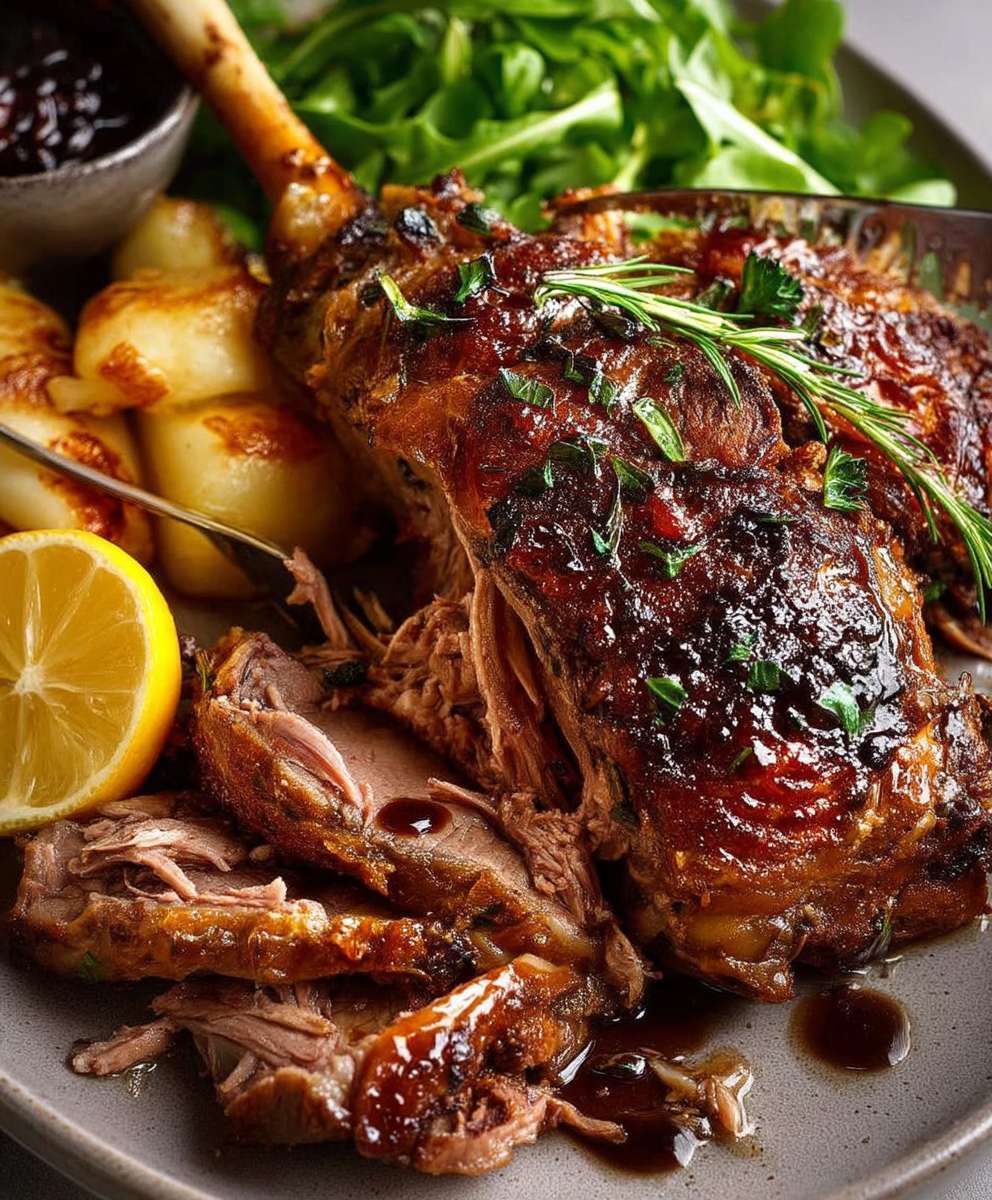
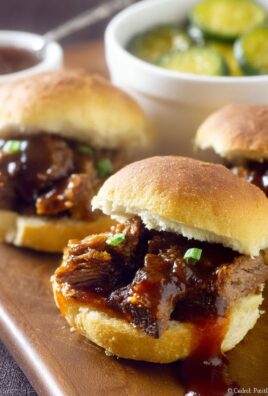
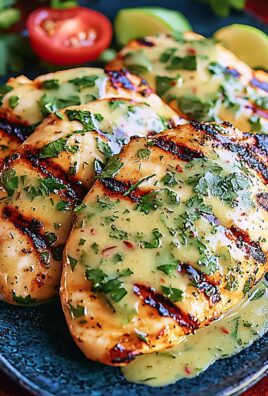
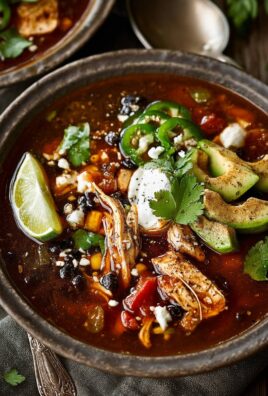
Leave a Comment